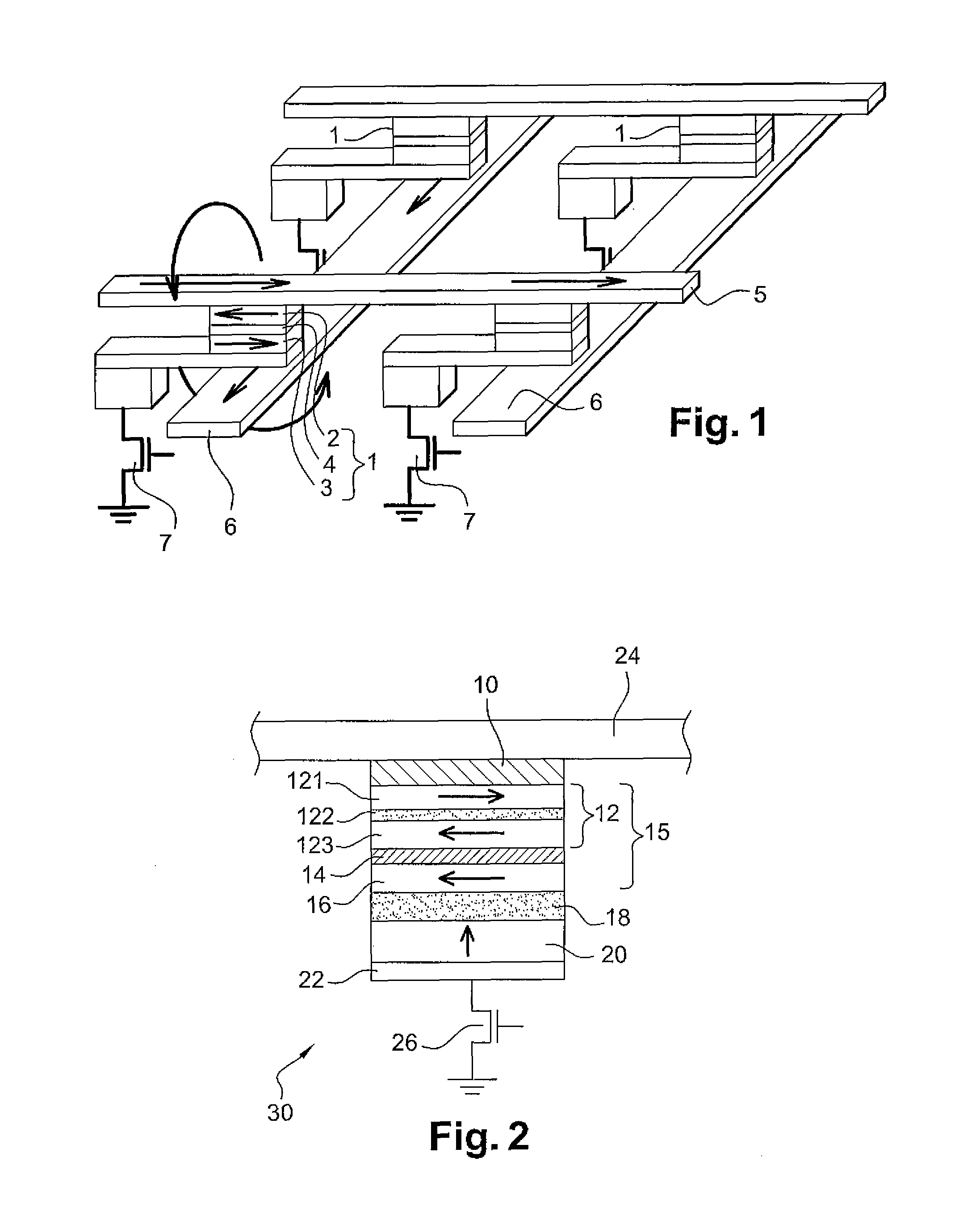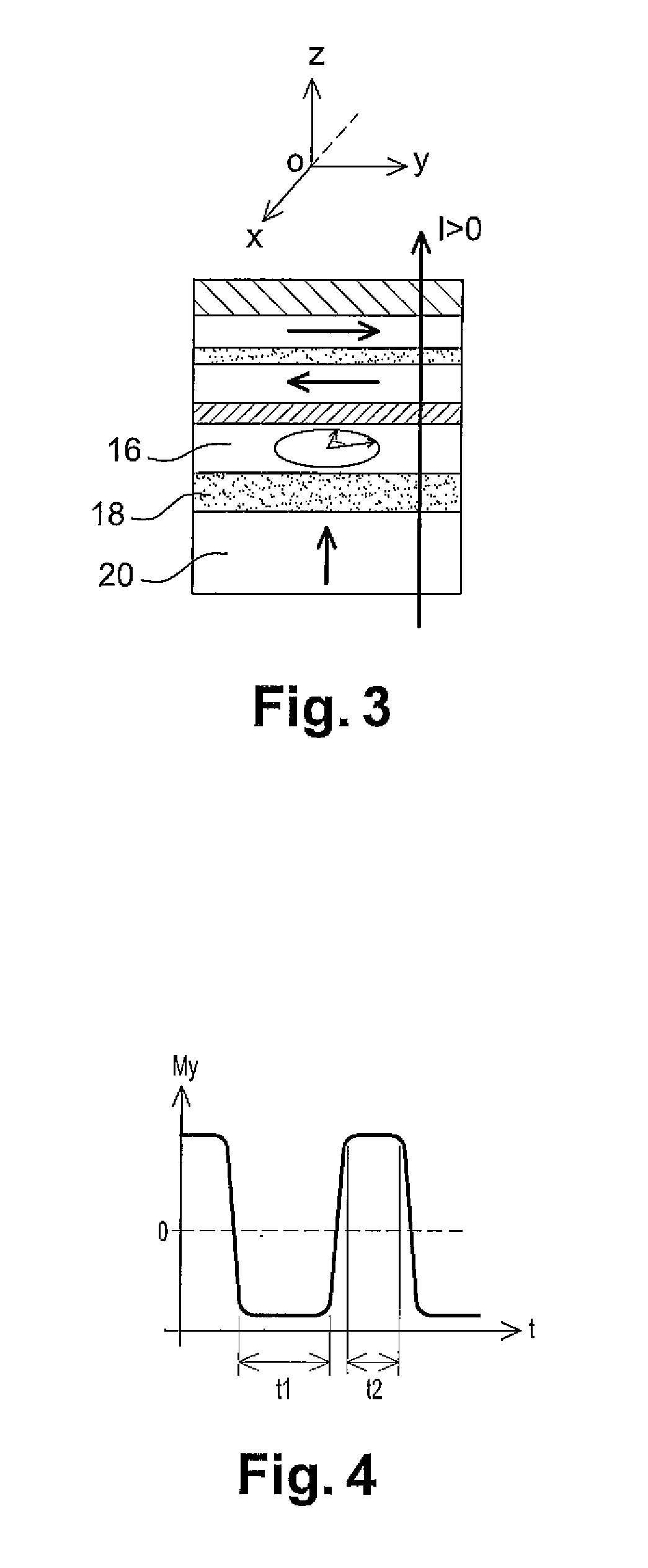Spin polarised magnetic device
a magnetic device and spin polarisation technology, applied in the direction of solid-state devices, magnetic bodies, instruments, etc., can solve the problems of increasing the number of address errors, affecting selectivity, and the writing mechanism described above presents some difficulties, so as to reduce the stochastic fluctuations in the magnetisation reversal time
- Summary
- Abstract
- Description
- Claims
- Application Information
AI Technical Summary
Benefits of technology
Problems solved by technology
Method used
Image
Examples
Embodiment Construction
[0108]FIGS. 1 to 4 have already been described with reference to the state of the art.
[0109]An Oxyz trirectangular trihedron enables the different directions to be located, the Oz axis being perpendicular to the plane of the layers.
[0110]FIG. 5 schematically represents a magnetic device 200 according to the invention.
[0111]The magnetic device 200 comprises:[0112]a magnetic reference layer 201 with a fixed magnetisation direction (in this case located in the plane of the reference layer);[0113]a first non-magnetic spacer 202;[0114]a magnetic storage layer 203 with a magnetisation capable of being redirected according to two substantially opposite states of direction (two positions of equilibrium substantially following the axis defined by the fixed magnetisation direction of the reference layer 201);[0115]a second spacer 204;[0116]a layer 205 generating spin polarised electrons with a magnetisation located out of the plane of the polarisation layer and with a direction perpendicular ...
PUM
 Login to View More
Login to View More Abstract
Description
Claims
Application Information
 Login to View More
Login to View More - R&D
- Intellectual Property
- Life Sciences
- Materials
- Tech Scout
- Unparalleled Data Quality
- Higher Quality Content
- 60% Fewer Hallucinations
Browse by: Latest US Patents, China's latest patents, Technical Efficacy Thesaurus, Application Domain, Technology Topic, Popular Technical Reports.
© 2025 PatSnap. All rights reserved.Legal|Privacy policy|Modern Slavery Act Transparency Statement|Sitemap|About US| Contact US: help@patsnap.com



